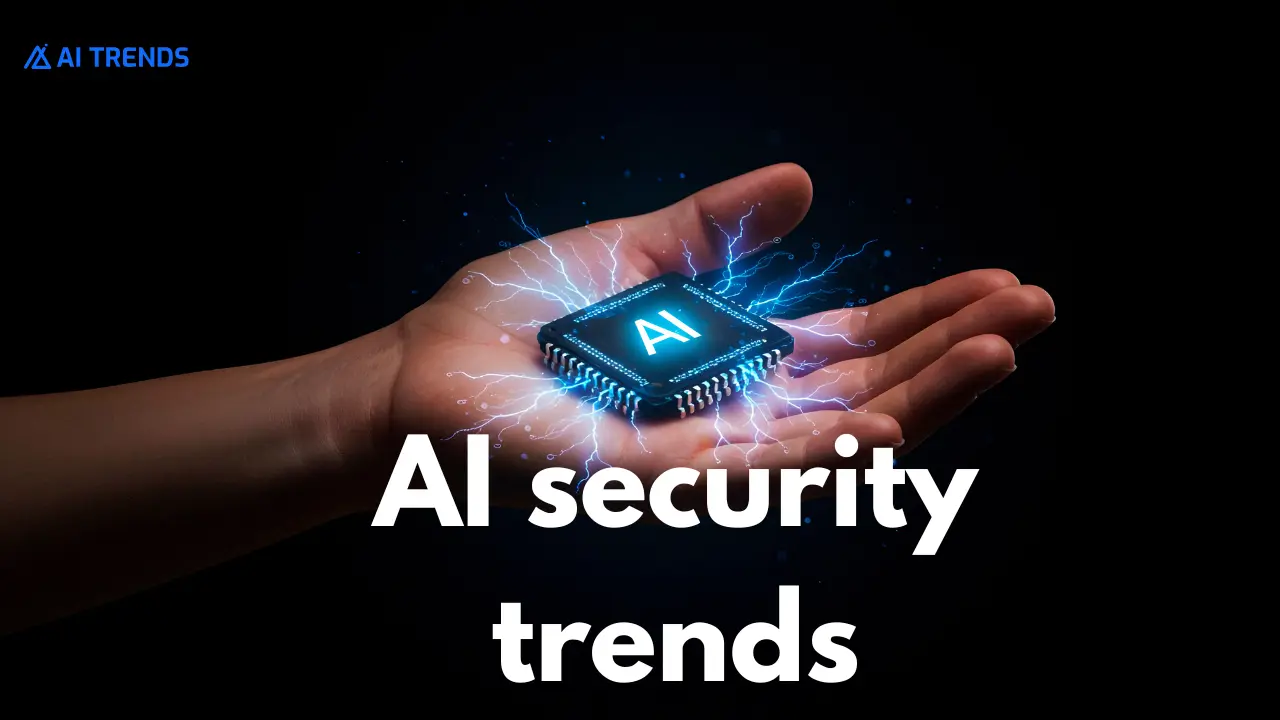Table of Contents
Introduction: Why AI Security Trends Matter
Cyber attacks are growing every year. Hackers are getting smarter, and old-school security tools are no longer enough. That’s where AI security trends come in. Think about it. Traditional security is like a guard who checks IDs at the door. AI, on the other hand, is more like a detective who spots suspicious behavior even before someone gets inside. That’s why big companies, banks, and even small startups are now using AI for cyber defense. In this guide, I’ll break down what’s happening in AI security, where it’s heading, and how it affects you. We’ll cover real-life use cases, risks, and best practices. By the end, you’ll know whether AI is a must-have for your security setup or just hype.
What Are the Latest AI Security Trends?
Here’s a quick list before we dig in:
- AI-driven threat detection (spotting attacks faster than humans)
- Predictive security analytics (catching risks before they hit)
- Deep learning for cyber defense (learning patterns from huge data sets)
- Automated threat response (AI tools acting instantly)
- AI-powered fraud detection (especially in banking and e-commerce)
- AI for cloud security (protecting remote storage and SaaS apps)
- Identity and access management with AI
- Adversarial AI attacks (hackers fighting AI with AI)
Let’s break each of these down in plain English.
1. AI-Driven Threat Detection
Traditional security systems rely on known attack signatures. If a hacker changes the method slightly, the system often misses it. AI changes that. By analyzing patterns of normal behavior, it flags unusual activity. For example:
- If an employee’s account suddenly downloads 20GB of files at 2 a.m., AI can flag it.
- If login attempts come from five countries in one hour, AI spots it as suspicious.
My take: This is the biggest win of AI in cybersecurity. Instead of reacting, you’re preventing.
2. Predictive Security Analytics
Here’s the deal: most attacks leave small digital footprints before they strike. AI-powered tools look at logs, traffic, and user behavior to predict attacks before they happen. Think of it like weather forecasting but for hacks.
For example:
- Banks use predictive AI to detect fraud before transactions go through.
- Cloud platforms use it to warn admins of risky activity in real time.
3. Deep Learning for Cyber Defense
Deep learning is like giving AI a huge memory. It studies millions of past attacks to learn what to watch out for.
Real-world use:
- Email security platforms use deep learning to block phishing attempts.
- Malware detection tools identify new viruses based on file behavior, not just known signatures.
4. Automated Threat Response
One of the biggest problems in cybersecurity is response time. When an attack hits, every second matters. AI tools like automated intrusion detection systems can:
- Shut down access to a compromised account instantly.
- Quarantine infected files before they spread.
- Alert admins with exact attack details.
This means fewer sleepless nights for IT teams.
5. AI-Powered Fraud Detection
If you’ve ever had your bank freeze a suspicious payment, that’s AI at work. Fraud detection is one of the most mature areas of AI security. It works by comparing every transaction against patterns of normal behavior.
Example:
- A sudden $2,000 purchase in another country triggers a check.
- AI models score the risk and decide whether to block it.
For e-commerce, AI reduces chargebacks and boosts customer trust.
6. AI for Cloud Security
With so many businesses moving to cloud platforms like AWS, Google Cloud, or Microsoft Azure, cloud security is now critical.
AI helps by:
- Monitoring who accesses sensitive files.
- Detecting unusual data transfers.
- Securing API connections.
Without AI, cloud breaches could go unnoticed for weeks. With AI, companies can spot them in minutes.
7. Identity and Access Management (IAM)
Passwords alone are weak. People reuse them, share them, and sometimes even write them on sticky notes. AI strengthens identity protection by:
- Using biometrics (like voice or facial recognition).
- Flagging suspicious login patterns.
- Enforcing adaptive authentication (extra checks if something looks odd).
This trend is growing fast as remote work becomes the norm.
8. Adversarial AI Attacks
Here’s the scary part. Hackers are now using AI too. They’re building adversarial attacks designed to trick security systems. For example:
- A hacker may slightly alter malware so AI thinks it’s safe.
- Phishing emails are now AI-written, making them harder to detect.
This is like a chess match: defenders build smarter AI, and attackers try to outsmart it.
Benefits of AI in Threat Detection
Let’s keep it simple. AI security tools:
- Work 24/7 without breaks.
- Spot patterns humans miss.
- Act faster than manual teams.
- Reduce false alarms.
But here’s the flip side…
AI Security Risks and Challenges
AI isn’t magic. It comes with its own risks:
- Bias in data: If the training data is weak, AI may miss certain attacks.
- Cost: Top AI tools can be expensive, especially for small businesses.
- Complexity: Setting up AI security requires skilled teams.
- AI vs AI: Hackers are also using machine learning to break defenses.
So while AI is powerful, you can’t just set it and forget it. You still need human oversight.
AI vs Traditional Cybersecurity Methods
Here’s a quick comparison:
| Feature | Traditional Security | AI Security |
|---|---|---|
| Detects known threats | ✅ | ✅ |
| Detects unknown threats | ❌ | ✅ |
| Response speed | Slow (minutes/hours) | Instant |
| Requires manual updates | ✅ | ❌ (self-learning) |
| Cost | Lower | Higher |
| Best for | Basic protection | Advanced, evolving threats |
Bottom line: AI is not a replacement; it’s an upgrade.
Can AI Prevent Ransomware Attacks?
Yes, to some extent. AI can:
- Detect early signs of ransomware activity.
- Stop suspicious file encryption before it spreads.
- Block known ransomware servers from connecting.
But no system is 100% safe. The best defense is AI + backups + good training for employees.
AI Security Tools and Frameworks
Some popular tools you’ll hear about:
- Darktrace – AI-driven threat detection.
- CrowdStrike Falcon – endpoint AI protection.
- IBM QRadar Advisor with Watson – uses AI to analyze incidents.
- Azure Sentinel – cloud-native AI security.
Most offer both free trials and paid plans. Pricing often depends on the number of devices or data volume.
- Free versions: Usually limited to small teams or basic monitoring.
- Paid plans: Start around $30–$100/month per endpoint.
Platforms:
- Web dashboards for admins.
- Mobile apps for alerts.
- Some even offer Chrome extensions for browser-level protection.
Best Practices for AI Cybersecurity
If you’re thinking about using AI for security, here are some tips:
- Don’t rely on AI alone – combine it with human review.
- Keep systems updated – AI can’t protect against outdated software holes.
- Train staff – phishing simulations are still vital.
- Choose the right scale – small business? Don’t overspend on enterprise tools.
- Review alerts regularly – false positives can pile up.
Future of AI in Cybersecurity (2025 and Beyond)
Here’s where I see things going:
- More AI at the edge: Security tools built into IoT devices like smart cameras.
- AI-driven privacy tools: Protecting personal data, not just company data.
- Smarter zero-trust systems: Continuous checks on every device and user.
- AI explaining its decisions: More transparency so humans can trust the results.
The future looks promising, but we’ll also see more AI-powered attacks. Staying ahead will be key.
FAQs About AI Security Trends
Q1: What are the latest AI security trends?
The big ones are predictive analytics, automated response, cloud security, and AI-driven fraud detection.
Q2: How is AI used in cybersecurity?
It monitors behavior, detects anomalies, predicts risks, and acts automatically.
Q3: Is AI better than traditional cybersecurity?
Yes, for unknown threats and fast response. But traditional tools are still useful as a base layer.
Q4: Can AI stop ransomware?
It can detect and block early signs, but backups and user training are still required.
Q5: What are the risks of AI in security?
High cost, data bias, and hackers using AI against you.
Q6: What’s the future of AI in cybersecurity?
Expect smarter tools, more automation, and AI battling AI in cyber defense.
Conclusion: Should You Invest in AI Security?
If you’re running a business today, ignoring AI security trends is risky. Attacks are faster, smarter, and more damaging than ever.
My advice?
- Small businesses: Start with affordable AI-powered antivirus and fraud tools.
- Medium to large businesses: Invest in predictive analytics and automated response systems.
- Everyone: Keep training your people. AI can’t fix human mistakes.
At the end of the day, AI isn’t about replacing humans. It’s about giving you the best possible chance to spot threats before they ruin your business.
If you need more information, follow the paragraph below.
Artificial Intelligence is transforming daily life, business, and learning. This blog shares the latest AI trends, tools, and insights in simple words. From generative AI to healthcare and automation, we cover it all. Stay updated with clear, practical knowledge in today’s fast-changing world of intelligent technology.








